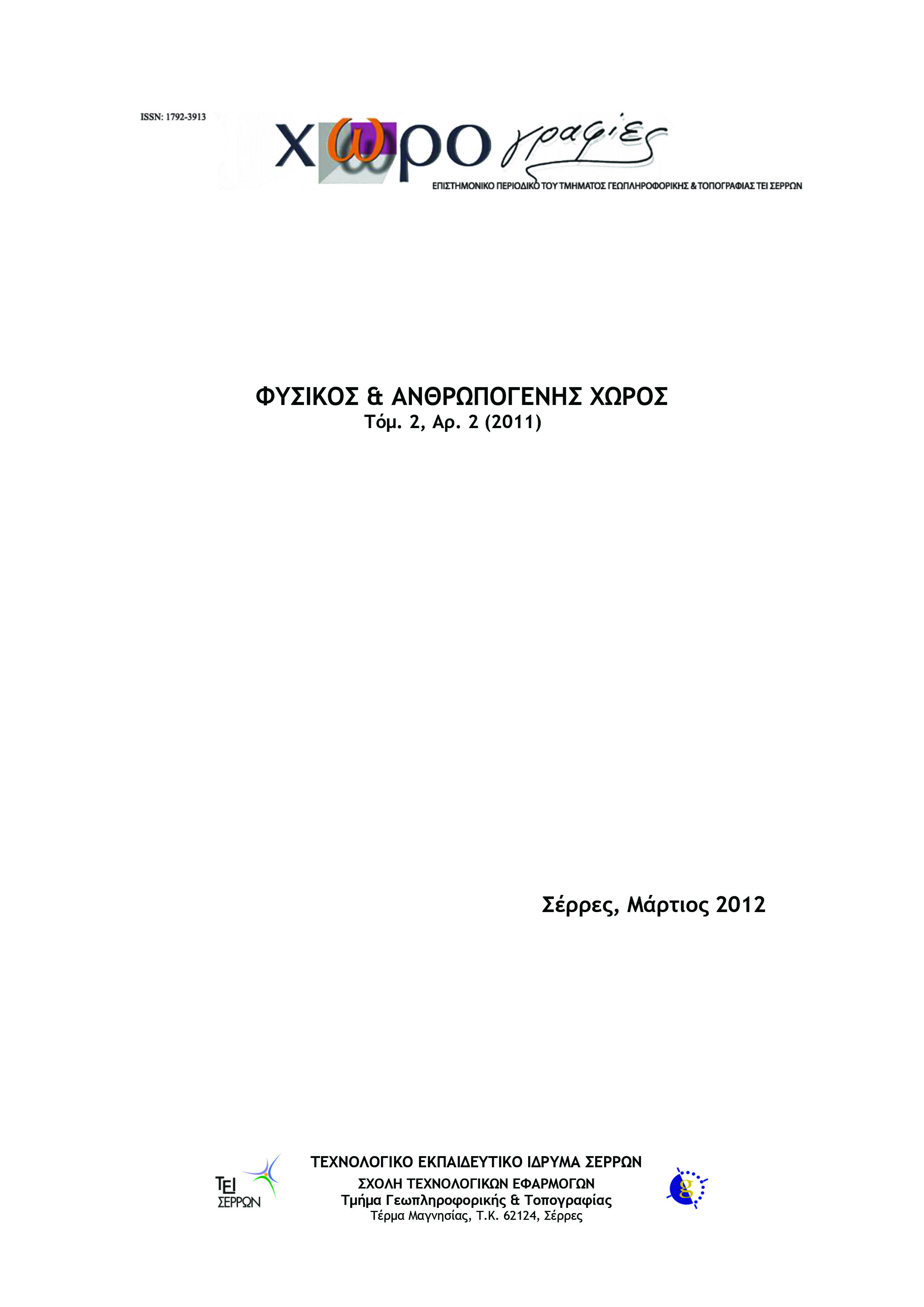
Published 2025-09-18
Keywords
- Εθνικός χώρος,
- εθνοτική κοινότητα,
- ατοπικό και ετεροτοπικό,
- Ελληνες,
- πολιτιστικό τοπίο
Copyright (c) 2011 Caravelis Mary

This work is licensed under a Creative Commons Attribution-NoDerivatives 4.0 International License.
How to Cite
Abstract
Έχει αποδειχθεί ότι οι εθνοτικές κοινότητες παίζουν πολύ σημαντικό ρόλο στην προστασία της πολιτιστικής κληρονομιάς των μελών τους και παρόλο τις σημαντικές έρευνες από γεωγράφους σε πολλές εθνοτικές κοινότητες στις Ηνωμένες Πολιτείες, οι Ελληνικές κοινότητες προσέλκυσαν πολύ λίγο ενδιαφέρον. Επιπλέον, η πλειοψηφία της γεωγραφικής έρευνας ασχολείται κυρίως με κοινότητες που είναι γνωστές ως εθνοτικοί γεωγραφικοί θύλακες, το οποίο δεν συμβαίνει με την Ελληνική Κοινότητα στο Μαϊάμι. Πρόσφατες έρευνες όμως έχουν αρχίσει να ασχολούνται με κοινότητες που δεν είναι γεωγραφικά συνδεδεμένες και διαπιστώνεται ότι η γεωγραφική σύνδεση δεν είναι πλέον απαραίτητη για τη συνοχή της εθνοτικής ομάδας. Εθνοτικά θεσμικά όργανα, όπως οι εκκλησίες, ενεργούν ως κέντρα κοινωνικής αλληλεπίδρασης, όπου τα μέλη που ζουν σε διάσπαρτες περιοχές μπορούν να συγκεντρώνονται για κοινές δραστηριότητες. Ο σκοπός αυτής της εργασίας είναι διπλός: πρώτα να μελετήσει την προέλευση, ανάπτυξη και εξέλιξη της Ελληνικής Κοινότητας του Μαϊάμι και δεύτερον, να περιγράψει με ποιον τρόπο οι ομογενείς αποτυπώνουν την παρουσία τους στην δεσπόζουσα κοινωνία.
Downloads
References
- John A. Agnew, James S. Duncan (edit.), Companion to Human Geography, Blackwell Publishing: 2011.
- Y.F. Tuan, Space and Place: The Perspective of Experience, Minnesota Press: 1977.
- W. Zelinsky, The Enigma of Ethnicity: Another American Dilemma, University of Iowa Press: 2001.
- “Migration and Community Formation under Conditions of Globalization”, S. Castles, in International Migration Review 36 (4), 2002. pp. 1143-68.
- United States Census. 1930, 1940, 1950, 1960, 1970, 1980, 1990. 2000, 2010 U.S. Census of population. Vol. 1, General Social and Economic Characteristics, Part II, Florida.
- T. Saloutos, The Greeks in the United States, Harvard University Press, 1964.
- S. Zotos, Stephanos, Hellenic Presence in America, Pilgrimage Press: 1976.
- A. Scourby, Greek Americans, Twayne Publishers, 1984.
- C. Moskos, Greek Americans: Struggle and Success, Transaction Publishers: 1989.
- “Miami 100 Years of History”, P. S. George, in South Florida History, Volume 24, No 2, Summer 1996.
- www.ahepa.org
- The American Life Histories: Manuscripts from the Federal Writers' Project, 1936 - 1940, collection contains typescript interviews from the Federal Writers' Project in Miami http://lcweb2.loc.gov/ammem/wpaintro/index.html.
- Changing Economic Patterns in the Miami Metropolitan Area, 1940-1980”, R. A. Mohl in Tequesta, Vol. 7, No. 1, Jan. 1982, pp. 138-156.
- http://www.stsophiamiami.org/OurHistory.dsp
- [ Miami Herald 8/8/2010
- Miami News 6/4/1950
- Miami News 2/21/1994
- “Heterolocalism: an alternative model of the sociospatioal behavior of immigrant communities”, W. Zelinsky and B. A. Lee, in International Journal of Population Geography, Vol. 4, No.1, 1998, pp. 281-298.
- City of Miami Beach government: http://www.miamibeachfl.gov/visitors/scroll.aspx?id=14232
- Fr. Payiatis Personal Interview 9/10/2008
- Greek Orthodox Archdioceses of America ww.goarch.org/archdiocese/affiliates/rca/.../payiatis_philemon
- “Globalization to a Latin beat: the Miami Growth Machine”, J. Nijman in Annals of the American Academy of Political Science;, Vol. 551, May 1997, pp. 164- 178.
- Greek Orthodox Archdiocese of Atlanta http://www.atlanta.goarch.org/index.php?pr=Parishes-FLMiami-Andrew
- George Nichols, Personal Interview 4/17/2009.
- “Communities Across Borders Under Globalising Conditions: New Immigrants and Transnational Cultures”. P. Kennedy and V. Roudometof, http://www.transcomm.ox.ac.uk/working%20papers/WPTC-01-17%20Kennedy.pdf .
- “Panem et circenses? A critical analysis of ethnic and multicultural festivals”, D. Dawson, Journal of Applied Recreation Research, 16 (1), 1991, pp. 35-52.
- R. Alba, The Transformation of White America, Yale University Press, 1990.
- K.C. Ryden, Mapping the Invisible Landscape: Folklore, Writing, and the Sense of Place, University of Iowa Press, 1993.